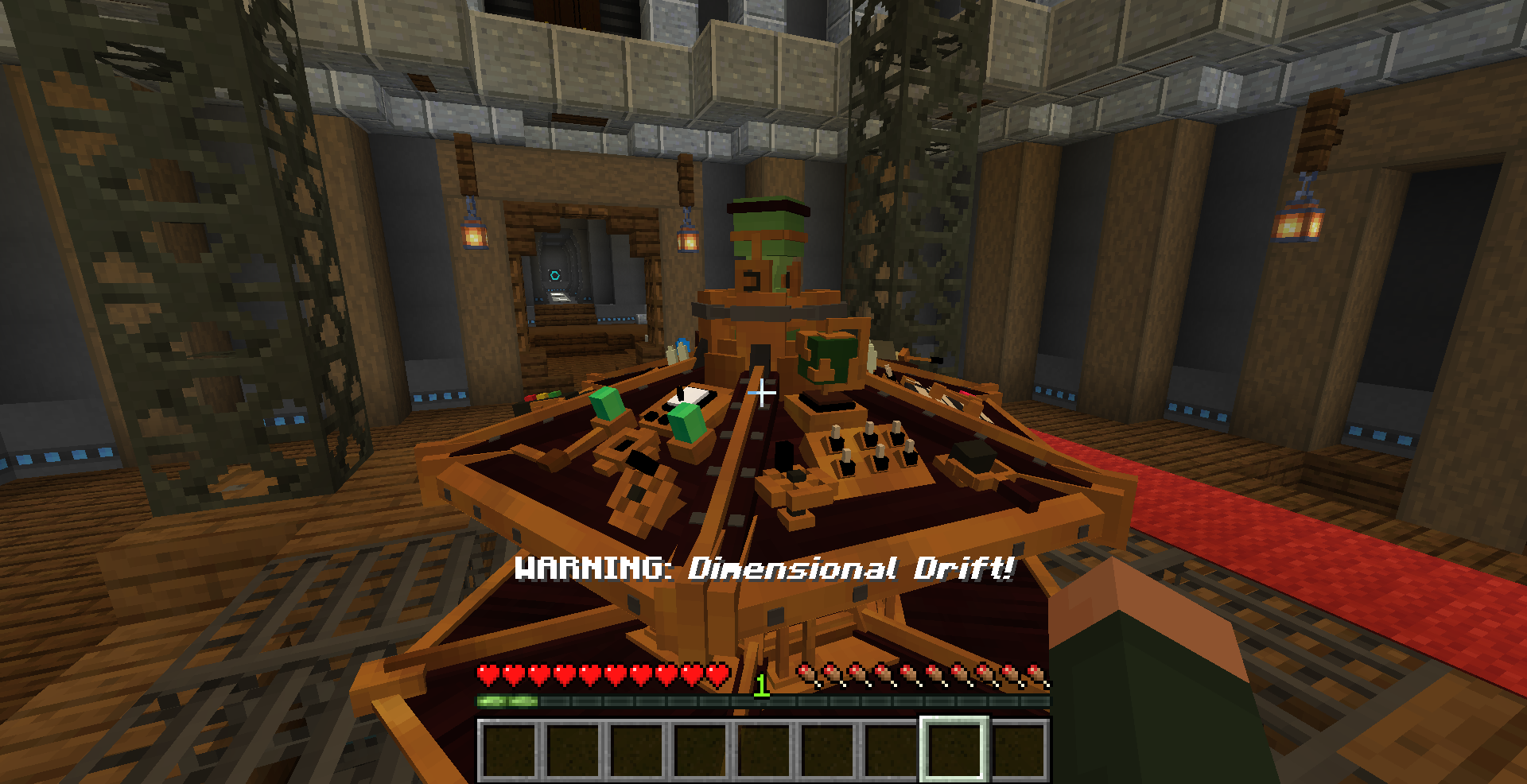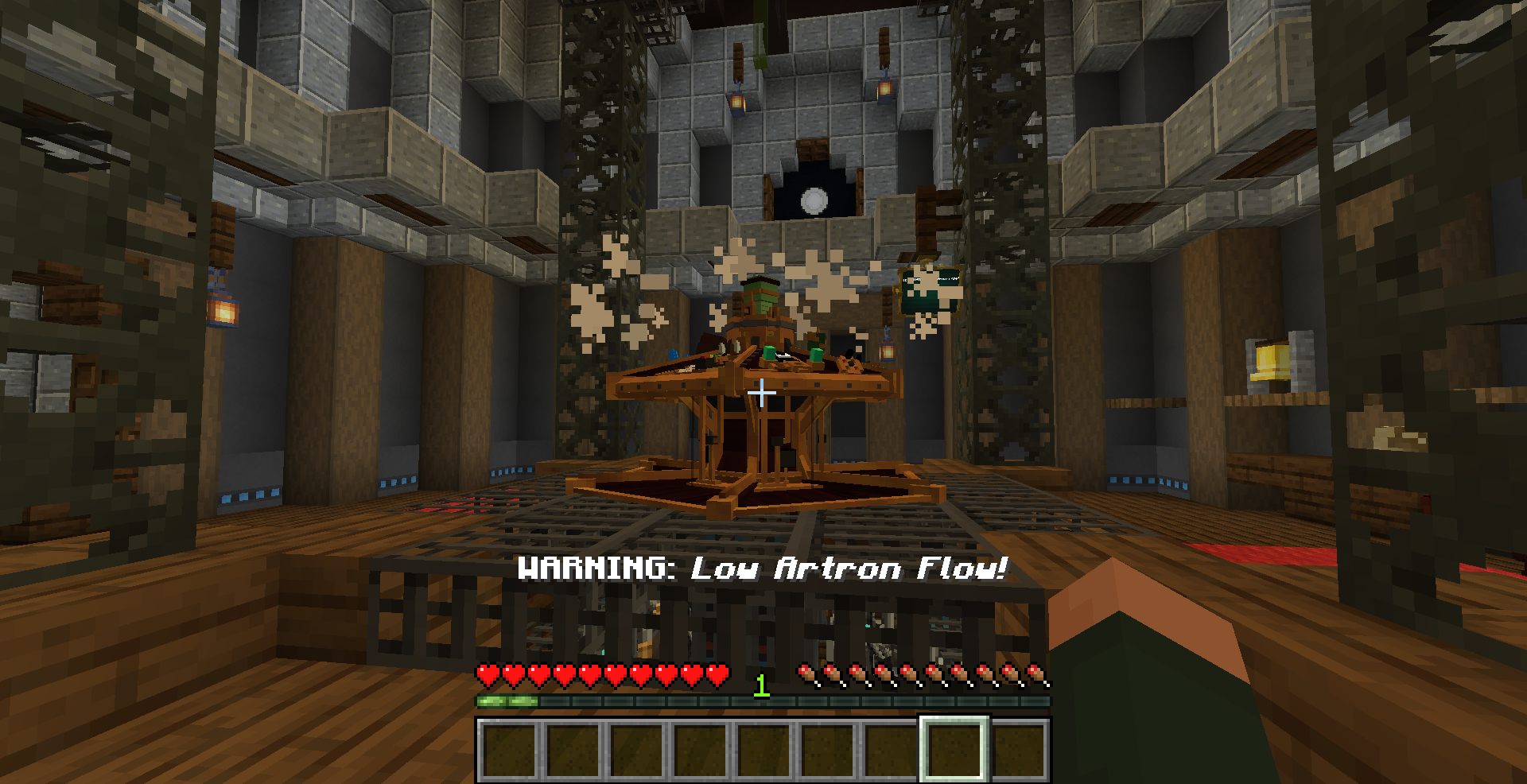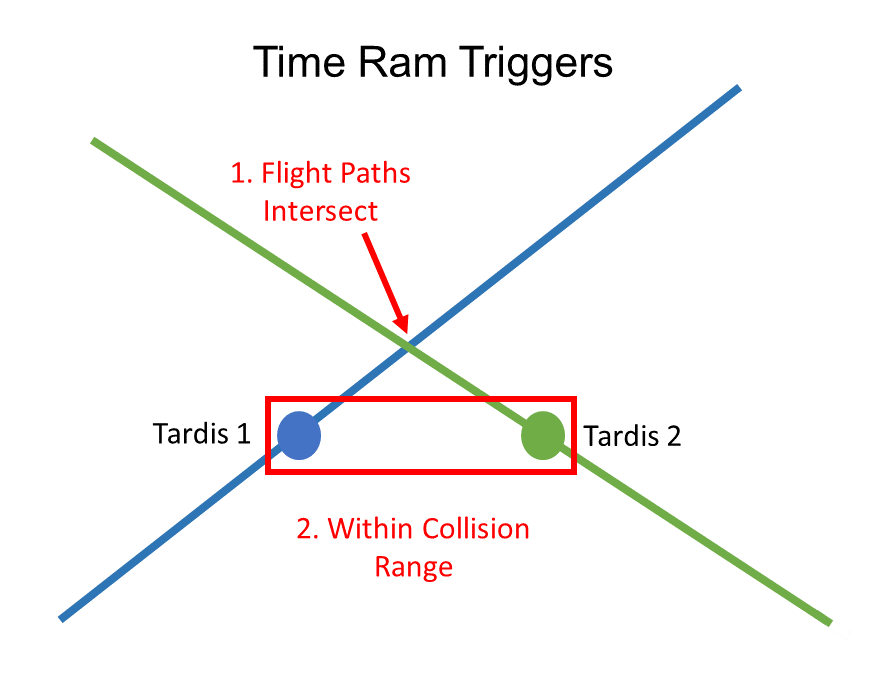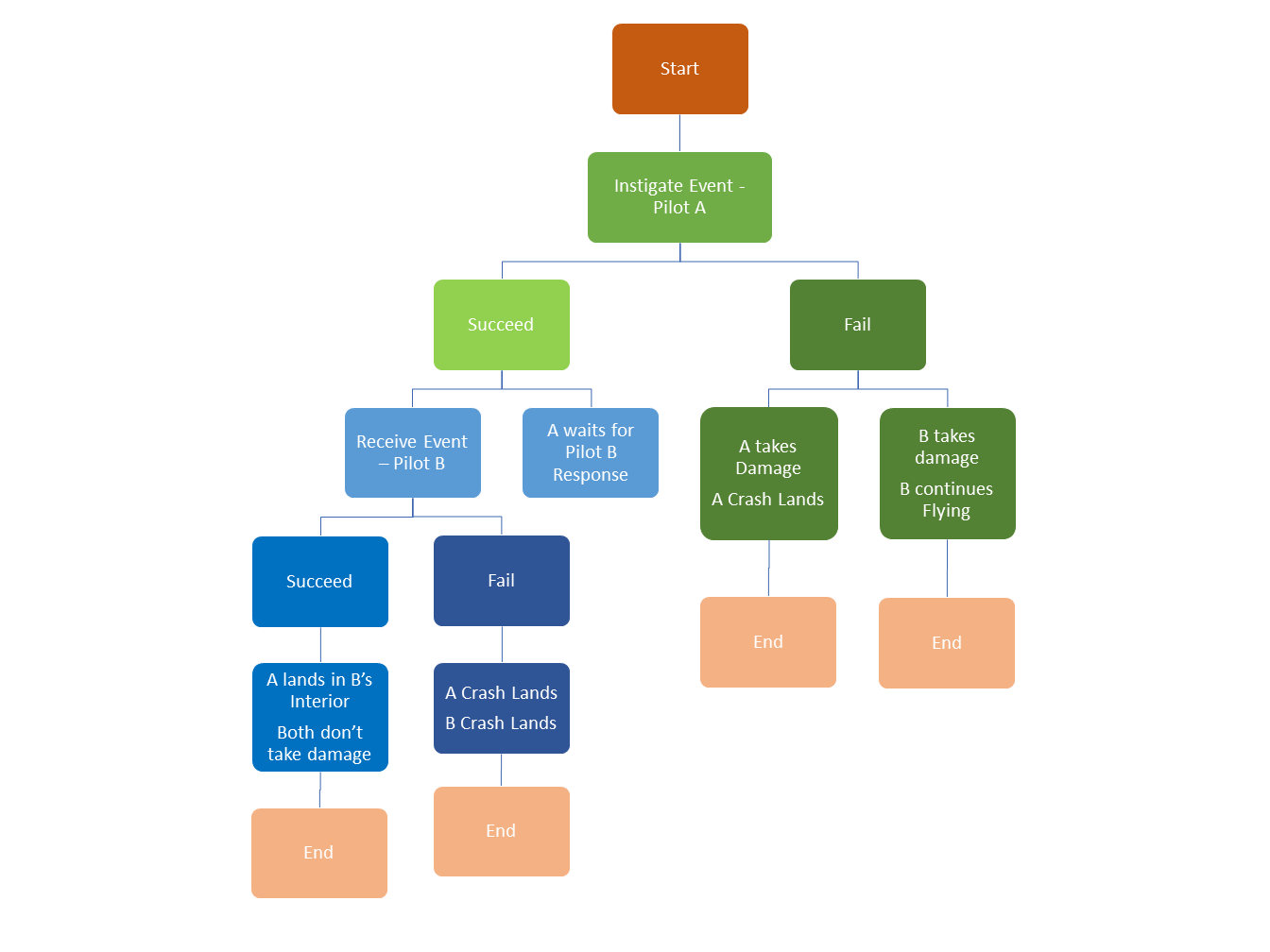Tardis Flight
This chapters outlines some guidelines and explains the mechanics of Flight for pilots to better understand their Tardis.
As of 1.4+, Tardises have three types of flight modes:
- Stabilised
- Unstabilised
- Vortex Limbo
Stabilised Flight
Stabilised Flight is the default flight mode. It doesn't require any additional pilot input during flight.
It will allow the Tardis to automatically take off and land.
Unstabilised Flight
Unstabilised Flight is an faster, but more risky form of flight.
It allows a time-ship to fly twice as fast for half the fuel usage compared to Stabilised Flight.
In addition, as the time-ship does not have to do any work, it prefers this form of flight. This means it will be more likely to be elated in mood as you fly it, and begin to trust the pilot if they can competently fly the Tardis in this method which can increase its loyalty faster.
During the flight, the pilot must respond to a variety of flight hazards by pressing the correct controls.
The pilot has 3-10 seconds to respond (As of 1.5.4, configurable via the server config file). The response time will increase when the Throttle speed is set lower. However, lower Throttle speed will increase the travel time and potentially increase wear and tear on subsystems.
If you fail to press the correct controls in time, the time-ship will suffer damage to its sub systems and it can go off course.
Finally, in this flight mode you must also manually land the Tardis. This involves setting the Throttle speed down to 0 when you have reached your destination. If you do not do this, you will automatically Vortex Limbo mode.
Overall, you need to be quick to respond when piloting the Tardis in this way, and consider the benefits and costs of your decisions when setting Throttle speed.
Vortex Limbo
This form of travel lets your Tardis stay in flight even after you reach your intended destination. This allows you to redirect the Tardis if you suddenly need to, or give yourself more time to prepare for potential dangers outside the Tardis.
You can activate this flight mode by first flying the Tardis in Unstabilised Flight Mode, and not throttling down when you reach your destination.
Vortex Limbo can occur for an long period time, but during this your subsystems and fuel will continue to be used. You can stay in the Vortex until your essential Flight subsystems break or your Tardis runs out of fuel.
Flight Hazards
During Unstabilised Flight Mode, you must respond to a variety of hazards as mentioned earlier.
 |
 |
| A Flight Hazard Warning | The Tardis Console exploding as a result of not avoiding the Flight Hazard |
These are quicktime events that involve the pressing of one or more controls to avoid the hazard.
Failing to respond in time can cause a variety of consequences. These will be outline further for each hazard.
The complete list of hazards as follows:
- Vortex Scrap
- Time Winds
- Spacial Drift
- Low Artron Flow
- Exterior Bulkhead
- Dimensional Drift
- Vertical Displacement Error
- Time Ram
Vortex Scrap
Dangerous objects can damage your time-ship whilst it’s in the Time Vortex.
Required Response:
- Randomiser
- Exterior Facing
Fail Consequence:
- Damage to subsystems
Time Winds
Time Winds in the Vortex can cause hazardous turbulence.
Required Response:
- Throttle
Fail Consequence:
- Damage to subsystems
Spatial Drift
Sometimes your Timeship can drift off course
Required Response:
- Depending on the type of drift specified, use the corresponding X,Y or Z control.
Fail Consequence:
- Damage to subsystems
Low Artron Flow
Your timeship may not be receiving enough fuel to its engines.
Required Response:
- Refueler Control
Fail Consequence:
- Loss of fuel
- 2% chance of an Artron Capacitor becoming a Leaky Artron Capacitor
Artron Pocket
Your timeship has discovered a pocket of extra Artron Fuel.
Responding to this flight event allows the Tardis to gain a boost of extra Artron Energy.
Required Response:
- Exterior Facing
- Refueler Control
Fail Consequence:
- None
Exterior Bulkhead
The Exterior shell bulkhead could be experiencing a lot of stress.
Required Response:
- Door Control
Fail Consequence:
- Interior door opening, which can suck you into the Vortex!
Dimensional Drift
The Timeship’s can drift away from its destination dimension
Required Response:
- Dimensional Control
Fail Consequence:
- Destination Dimension changed
Vertical Displacement
The Timeship vertical direction may become inaccurate
Required Response:
- Vertical Land Type Control
Fail Consequence:
- Tardis’ Vertical Land type can be randomized
Time Ram
This is a highly dangerous hazard that can occur if the paths of two Tardises intersect each other, and the Tardises are within 30 blocks of each other on their path.
 |
| A diagram showing the events that trigger a Time Ram |
To successfully avoid this hazard, this requires the cooperation of two pilots. Let one of the Pilots be Pilot A and the second pilot Pilot B
The Time Ram has two subevents sent to different pilots
Both events need to be successfully completed to avoid consequences.
- Instigate – Sent to Pilot A
- Receive – Sent to Pilot B
The following flowchart showcases all possible outcomes:
 |
| A flowchart showing all possible outcomes of a Time Ram |
Time Ram - Instigate Event
To successfully complete the Instigate Event, Pilot A must do the following:
Required Response:
- Communicator
- Randomiser
- Throttle
Time Ram - Receive Event
To successfully complete the Receive Event, Pilot B must do the following:
Required Response:
- Communicator
- Randomiser
- Dimensional Control
